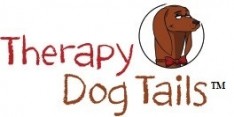Most of my canine friends cringe when they hear the phrase “Man’s Best Friend”. We know they mean well by it even though the expression is often accompanied by a certain human condescension and a quick pat on the head, which we love, of course. However, we dogs don’t consider humans to be our best friend. In my experience “dog’s best friend” usually refers to the fire hydrant.
What is curious to me about the human insistence that the dog is his best friend is the contrary human insistence that they live in a “dog eat dog” world. Lest you imagine that I’m quibbling over semantics, I would only suggest that every commonplace cliché, platitude or bromide springs from some deep-seated anthropological context, which, in this case, would suggest a deep ambivalence on the part of the human creature toward his “best friend”, perhaps dating back to prehistoric (caveman) or pre-domestication (wolf pack) times.
There are plenty of alternatives that make more logical sense from the human perspective. “Shark eat shark” world, for example, would make the same point with perhaps even more “bite”, so to speak. “Turkey eat turkey” world would, perhaps, send a similar, more succulent message. “Aardvark eat aardvark” world would certainly add depth of meaning. “Dove eat dove” world might connote certain salacious aspects of the human environment. “Hippopotamus eat hippopotamus” world is simply too unwieldy. My own preference, however, would certainly be “cat eat cat” world, particularly given that the cat is known to have 9 lives. Eating one of them would merely leave 8 more to spare. Hence, an observation on a vicious world that isn’t quite so vicious after all.
Ultimately the fact that man lives in a “dog eat dog” world with his “best friend” implies both a reluctance to admit that his own world is as cruel as it often seems as well as an attempt to temper his own view of that cruel world, using the well documented loyalty of his favorite pet as a screen to his own inhumanity. The ambivalence inherent in these contradictory expressions suggests as many human issues toward themselves as a species as toward us dogs as their companions.
Note: For inclusion in Chap. 4: A Lick and a Wag – TD
